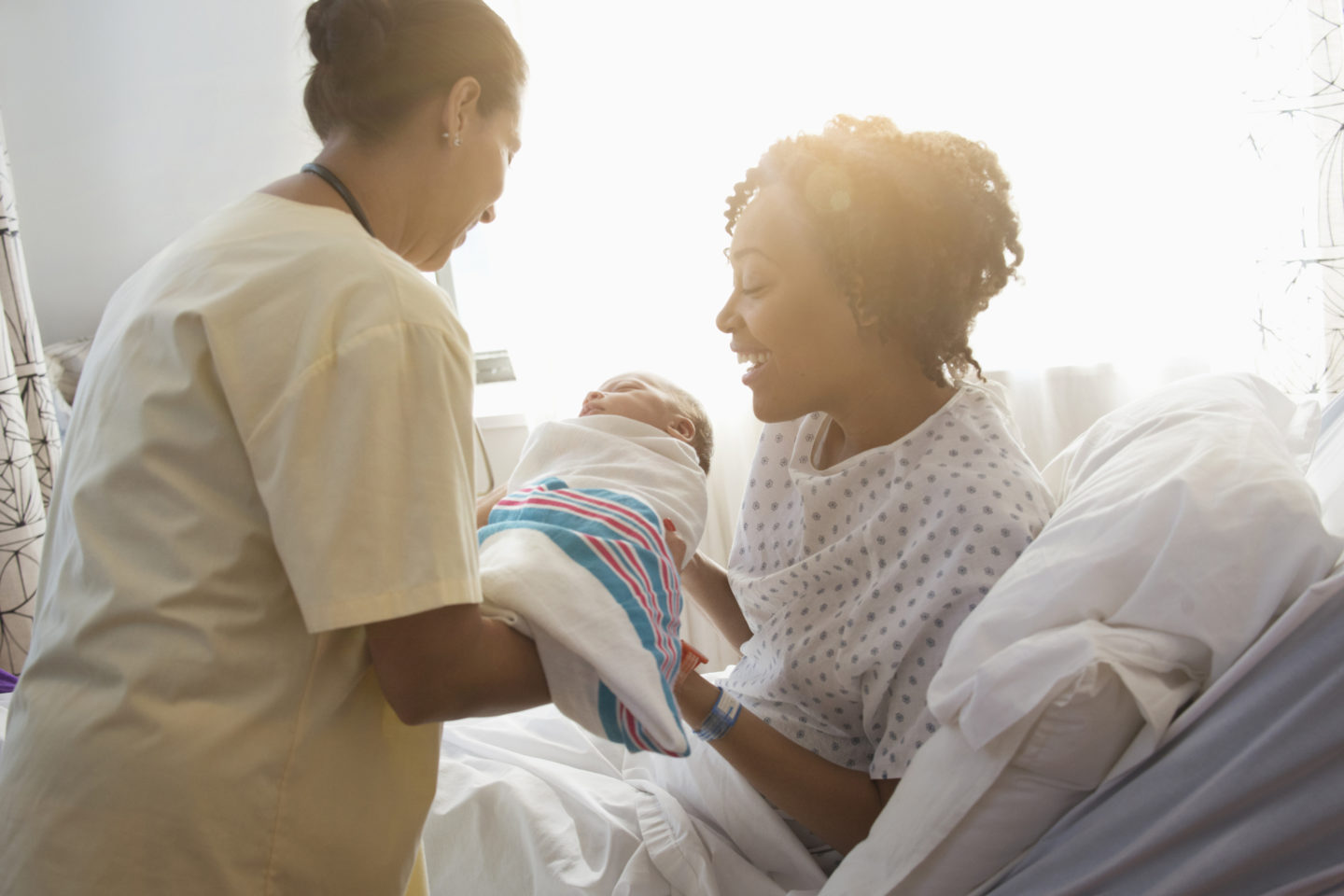Not sure if a baby-friendly hospital is right for you? Here’s the low-down.
So you’re making a birth plan, and you’ve decided to deliver in a hospital. Great, cross that off your list. But wait – do you want a hospital, or a baby-friendly hospital? Aren’t all hospitals baby-friendly? Does baby-friendly mean mom-friendly? What can you expect from a baby-friendly hospital experience?
While most hospitals include maternity wards, and even birthing centers, those with the designation “baby-friendly” are specifically focused on mother/baby bonding and infant feeding, particularly breastfeeding.
“Hospitals and birth centers play a critical role in helping women transition to motherhood,” says Melissa LaHann, the founder of LatchPal. “The Baby-Friendly Hospital Initiative is wonderful because it provides an outpouring of support for moms beginning their breastfeeding journey.”
The Baby-Friendly Hospital Initiative is a project of the World Health Organization (WHO) and United Nations Children’s Fund (UNICEF), begun in 1991 to promote breastfeeding. Hospitals implementing the Ten Steps to Successful Breastfeeding are given the designation of baby-friendly, which last for 5 years, and there’s a rather rigorous survey and data collection required to receive and maintain the recognition. 18% of U.S. births happen in baby-friendly hospitals, of which there are currently 350 across the country.
We know that breastfeeding can be complicated, painful, and frustrating, so if you give birth in a baby-friendly hospital, a lactation consultant will materialize before you soon after delivery, since, according to the Ten Steps, breastfeeding should begin one hour after the baby is born.
In addition to prohibiting the baby from ingesting anything other than breast milk, and showing mothers how to maintain lactation when she leaves the hospital, baby-friendly facilitate immediate and prolonged skin to skin contact, as well as “rooming in,” in which mother and baby spend 24 hours a day together (or as much time as possible), as opposed to the baby spending time in a separate nursery.
If you’re anxious about breastfeeding, or just want to get a jump on it as soon as you can, a baby-friendly hospital might be the right choice for you. But, of course, it’s not as simple as that. One of the tenets of the baby-friendly initiative is that other substitutes for breastfeeding, like infant formula, cannot be marketed to new mothers. In other words, if you were thinking you might leave the hospital with some free formula samples to supplement your nursing, that’s probably not going to happen at a baby-friendly facility.
There are, however, misconceptions about baby-friendly hospitals, particularly in regard to the stringent nature of the Ten Steps. That rule about not offering formula to new moms might not be so hard and fast.
“The baby’s health, nutrition and weight gain is the main priority and something we closely monitor. We want to ensure the baby is receiving the proper nutrition for a healthy start in life,” says Dr. Ralph Dauterive, an OB/GYN and Vice President of Medical Affairs at Oschner Medical Center in Baton Rouge, a baby-friendly hospital, in response to the charge that such hospitals never provide formula to moms who don’t breastfeed, or who are having trouble.
Emily Silver, a nurse practitioner with Boston NAPS, a group of nurses who assist families with new babies, says that she does see mothers experience difficulty with some aspects of the baby-friendly hospitals, such as having no access to nurseries or pacifiers, but also that hard limits aren’t necessarily hard.
“Mothers may undergo a long labor with hours of pushing, or a cesarean section, and if a mother is extremely exhausted or feels unsafe caring for her baby at night, then the nursery is incredibly important and appropriate. Our company in general practices that once milk supply is well established, it is okay to use a pacifier if desired and if the infant is looking to soothe after a feed.”
In spite of the fact that some baby-friendly facilities do practice care when enacting the Ten Steps, it still doesn’t mean it’s the right birth option for everyone. Ashley Koeppen, a labor and delivery nurse at Advocate Sherman Hospital in Elgin, Illinois, a baby-friendly hospital, says that while the support for breastfeeding is necessary, it “does not equal mom friendly. With the pressure to succeed in breastfeeding while not always having adequate assistance outside of the hospital, combined with society’s’ pressures on what makes a good mom, comes increased risk for postpartum depression and anxiety.”
Still not sure whether or not to go baby-friendly? Julia Wang, Head of Digital Content for The Bump (sister site to The Knot) and an expert on birth and parenting, suggests that expecting folks do their homework and visit hospitals, baby-friendly and otherwise, before deciding where they want to give birth. (You can find a list of baby-friendly hospitals here.) “Ask all your questions,” Wang advises. “That way, you can evaluate how sensitive the hospital will be to your individual needs, and if the baby-friendly structure will be beneficial to you.”




comments